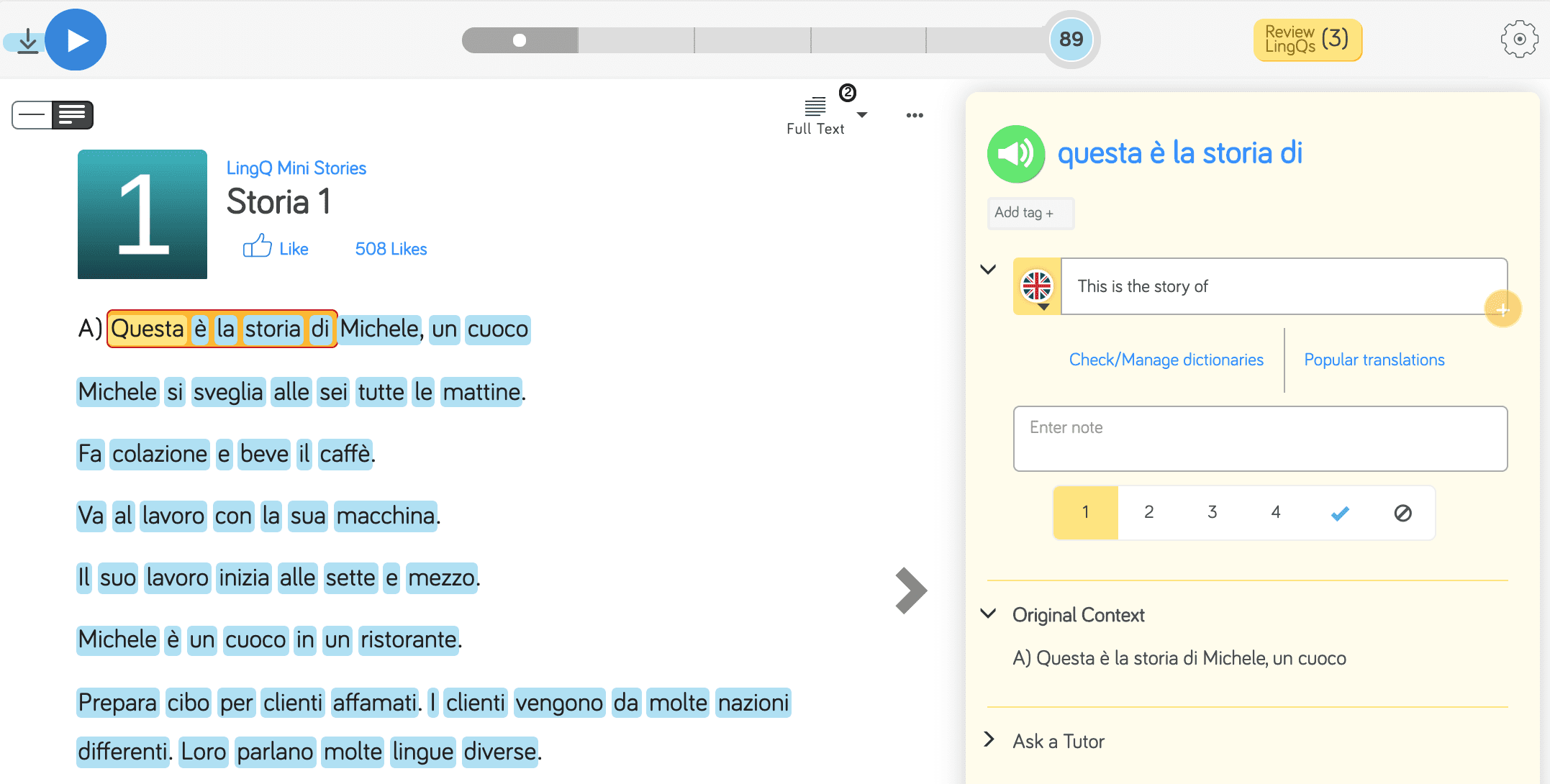Saying Hello in Italian and Other Conversation Basics
Italians have a reputation for being extremely friendly. However, their warmth has its limits and they will assume you are a rude person if you do not greet them when entering a shop or a restaurant.
Saying Hello in Italian
The simplest and most popular way to say “Hello” in Italian is to simply say “Buongiorno”, which means “Good Day”. You can use it throughout the day, even if it is not strictly the morning any more. If it is getting late, you should replace “Buongiorno” with another formal expression “Buona Sera”, which means “Good evening”. Both are safe to use with strangers and whenever you do not want to come off as too familiar. Always use them with people to whom you refer to as “Lei” meaning Mr or Mrs.
Even though “Buongiorno” is common, Italians often prefer a less formal version: “Ciao”. The greeting “Ciao” translates to “Hi!” and as you might guess, it is always used among friends. How do you know when it is appropriate to use it in a more formal context, though? It really depends on many variables, so try to take cues from the Italians you encounter. I would say it is safer to choose “Buongiorno”, especially if you do not feel comfortable in Italian yet.
When people reply “Ciao” to your “Buongiorno”, you can start using the former when interacting with them. An easy way out when you are unsure how to greet people is to use another formal word for “Hello” in Italian: “Salve”. It is not as popular as “Ciao” but is acceptable in most contexts and should not cause any offense. This particular greeting has a very long history and was initially used by the Romans. You may be familiar with it if you are a fan of the comic book series about Asterix and Obelix.
All of the above-mentioned greetings may also be used to say goodbye. Other expressions with the same meaning are:
– Arrivederci and Arrivederla (informal and formal “Bye!”, respectively)
– A domani! (“See you tomorrow!”)
– A lunedi/mardi etc (“See you on Monday/Tuesday!”)
– A dopo! (“See you later!”)
– A presto! (“See you soon!”)
The Italian “See you later!” and “See you soon!” should not be taken literally, just like in English. It is just a way to say “goodbye”, not necessarily an estimate of when the next meeting is going to happen.

We have pretty much covered all the ways to say “Hello” in Italian but before we move on I would like to mention one more thing. The greetings we have discussed so far are used in real life conversations. However, when you are picking up the phone you should say “Pronto”, which translates to “Ready”. A different greeting on the phone would sound artificial.
A great way to practice greetings and other vocabulary is to learn Italian using LingQ (available for both Android and iOS)! The lessons have text and matching audio, and all of the words and phrases you learn are saved to your personal Italian database.
A great place to start is with the Italian mini stories. This course is perfect for beginners as key terms and structures are repeated. There are also questions and answers after each lesson. Check them out!

Saying “Hello” is not everything
You have learnt today how to greet someone in an appropriate manner. That’s great! Nevertheless, a greeting on its own will not help you to make friends. Let us have a look at how to introduce ourselves to others and start a simple conversation.
M: Ciao, mi chiamo Magda (Hi, my name is Magda)
A: Ciao, mi chiamo Alberto (Hi, my name is Alberto)

The dialogue above is among the simplest interactions we can have with someone in Italian. If Alberto were less cooperative or maybe a bit shy and we wanted to learn his name, we could ask him “Come ti chiami?” (“What’s your name?”).
M: Ciao, mi chiamo Magda.
A: (silence)
M: Come ti chiami?
A: Mi chiamo Alberto.
M: Piacere di conoscerti, Alberto/Piacere (Nice to meet you).
When we meet someone new, it is nice to let them know we are pleased to make their acquaintance. Just like in English we want to avoid saying exactly that, otherwise we will sound like a robot. In Italian we either use the whole phrase “Piacere di conoscierti” or simply say “Piacere”. In a more formal context instead of saying “Come ti chiami?”, we would ask “Lei come si chiama?”. “Piacere di conoscerti” would then change into “Piacere di conoscierla”.

Carrying on the Conversation
After an introduction you can proceed with an actual conversation, depending on your Italian skills. If you are at a very basic level, you can always escape by saying “Devo andare adesso” (“I need to go now”) and say goodbye using one of the expressions we have discussed in this post.
Do not feel bad, if you can only have a very simple conversation. It is important to drill even the least complicated sentences and phrases so that you can get comfortable with them. Introduce yourself and have a mini small-talk session with as many Italians as you can (or do it in a classroom environment, if you have no access to native speakers). In this manner you will get rid of your language barrier, grow your confidence and get used to different pronunciation patterns.
Do not aim for perfection, just try to say as much or as little as you can. From my experience Italians are encouraging when you are trying to speak their language, so you should fear being mocked. Once you get past the greetings phase, you’ll be able to move on and learn things like Italian terms of endearment 😉
Ciao!
Enjoyed this post? Check out polyglot and LingQ cofounder Steve Kaufmann’s YouTube video on how he learned Italian!
***
Magdalena Osiejewicz-Cooper has lived in Bologna and Palermo. Apart from Italian she speaks fluent Polish and French. She is currently self-studying Spanish.


